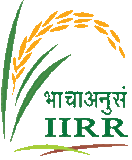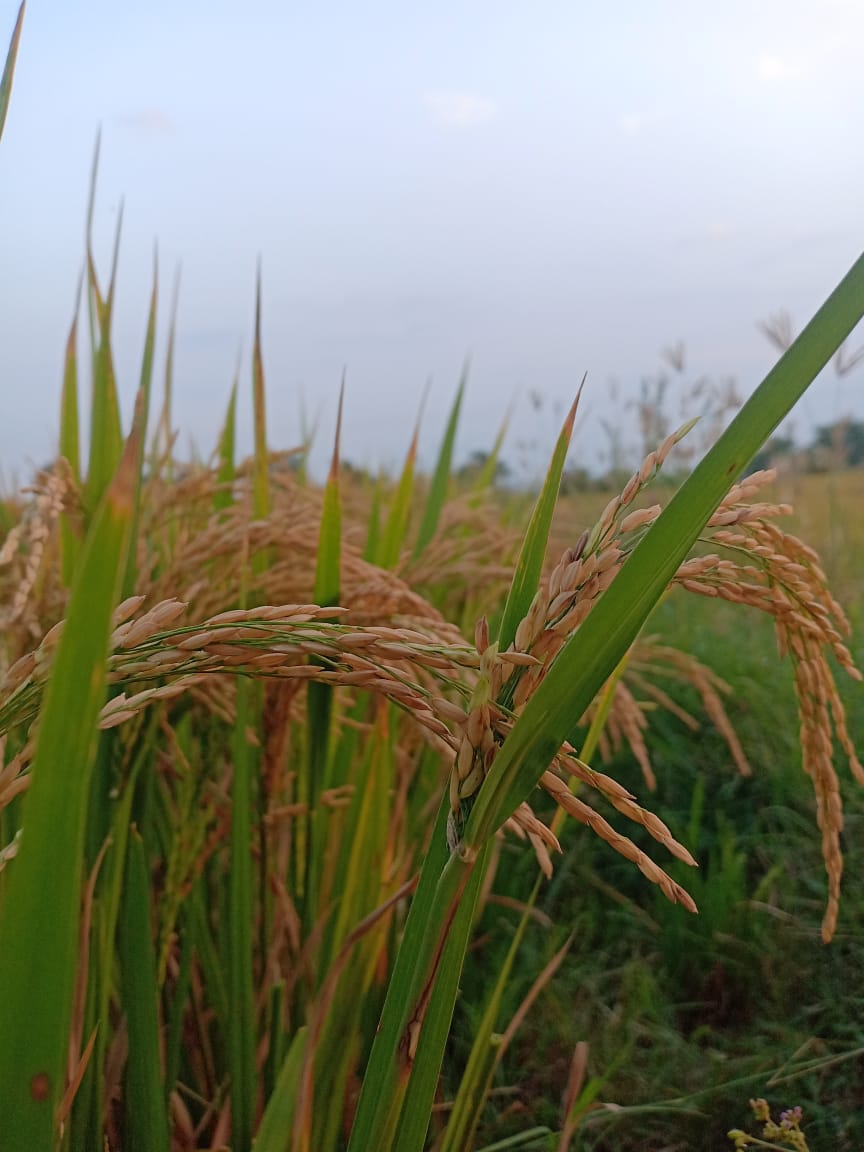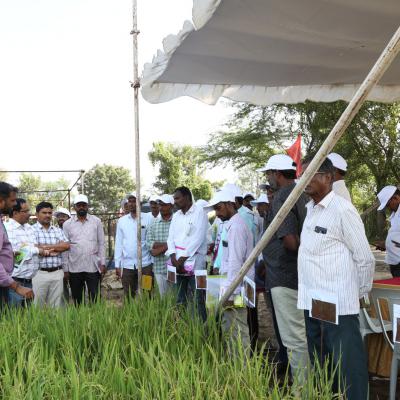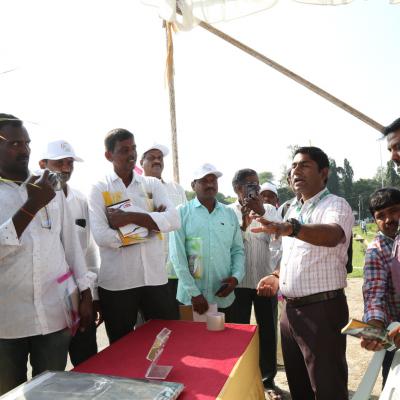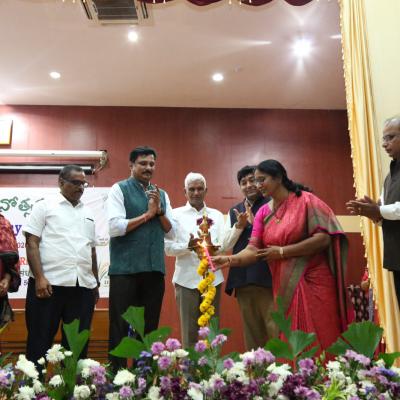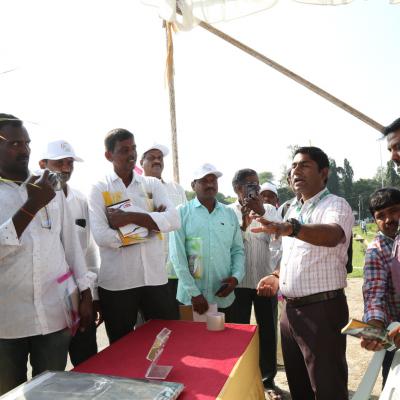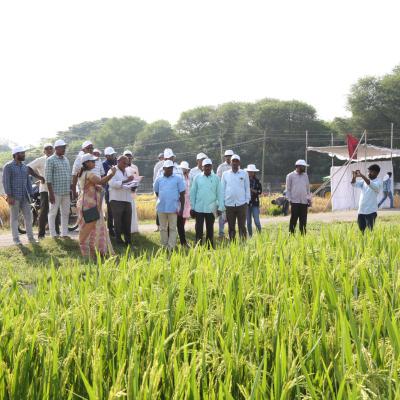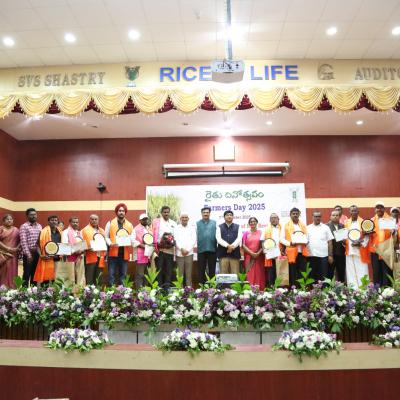DRR Dhan 48-Zinc Rich Biofortied Rice Variety
Technical details
DRR Dhan 48 (IET 24555) is a biofortified high zinc variety developed from the cross RPBio226*1/CSR27 following backcross and pedigree selection breeding released in the year 2018. The variety is similar to variety BPT 5204 popularly known as ‘Samba Mahsuri’ in most of the characters. This variety contains high zinc content of 22 ppm in polished rice and 27 ppm in brown rice which is higher than the checks BPT 5204, IR64, Kalanamak. It also out yielded the checks BPT 5204, IR64 which is a national check, Kalanamak and chitimuthyalu in the states released. The variety is distinguishable through morphological features like semi dwarf and strong culm which confers resistance to lodging, late senescence, erect and wide flag leaf which help in improving the photosynthetic ability which again helps in increasing the yield. compact heavy and completely exerted panicles and possesses desirable grain type of medium slender grains. The variety is late with duration of 135 – 140 days (Seed to seed).
Empirical evidences:
In the trials in AICRIP trials at various locations in Andhra Pradesh, Karnataka, Tamil Nadu and Kerala DRR Dhan 48 established the yield advantage of 21.8, 8.9, 8.2 and 17.7 % higher than the best check respectively along with 22 ppm of zinc in polished rice and 27 ppm in brown rice.
- It has Xa21+xa13+xa5 genes introgressed for bacterial leaf blight (BLB) and hence is resistant to BB. It has also showed moderate resistance to RTD, sheath rot, neck blast and brown spot.
- It has got good quality parameters like High milling recovery (69.4%), Head rice recovery (60.9%), medium slender grain. It also possesses good cooking quality with intermediate amylose content (24%), alkali spreading value (7.0) and GC (28 mm) with very occasionally chalky.
- The variety is recommended for cultivation in southern states like Telangana, Andhra Pradesh, Karnataka, Tamilnadu and Kerala.
Success story of DRR Dhan 48-Performance in farmer’s field
Sangi Nagaiah/Tummala Murali of Aroor village, Valigonda mandal, Yadadri Bhuvanagiri District of Telangana cultivated DRR Dhan 48 during kharif 2020 in an acre under the technical guidance of IIRR Scientists. Farmers appreciated the traits of DRR Dhan 48 in terms of it desirable plant height (slightly shorter than BPT 5204), resistance to bacterial blight despite not taking up plant protection measures and grain type akin to BPT 5204 and appreciated high (15-18) productive tillers per plant. Seed samples collected from farmer’s field as well as from IIRR, Rajendranagar farm were used for zinc estimation at International Rice Research Institute South Asia Hub (IRRISAH), ICRISAT, Hyderabad. The average zinc content in seed samples collected in farmer’s field ranged from 25.2 to 27.4 and 22.2 to 23.3 ppm in brown and polished rice respectively while in seed samples of IIRR farm ranged from 24.9 to 27.1 and 21.0 to 21.3 ppm in brown and polished rice respectively. Scientists from IIRR visited the farm at regular intervals during reproductive stage and performed roughing.
Impressed by the high yield and being aware of nutritional importance, Tummala Murali increased the area under cultivation up to 4 acres during rabi 2021. Scientists from IIRR closely monitored the fields and provided technical guidance from time to time. IIRR Scientists, research scholars and technical assistants visited the field at regular intervals to remove offtypes and mixtures which helped the farmer to maintain seed purity. Tummali Murali produced about 8 tonnes and expressed immense satisfaction. About 6300 kg of seed produced from his field was bought back by IIRR under SC-SP project and distributed to 210 identified beneficiaries for cultivation during kharif 2021. Tummali Murali is further extending cultivation to 8 acres during kharif 2021 and seeing his success story, many farmers from their village and neighbouring villages bought seed from Tummala Murali and will be taking up cultivation of DRR Dhan 48 during kharif 2021.
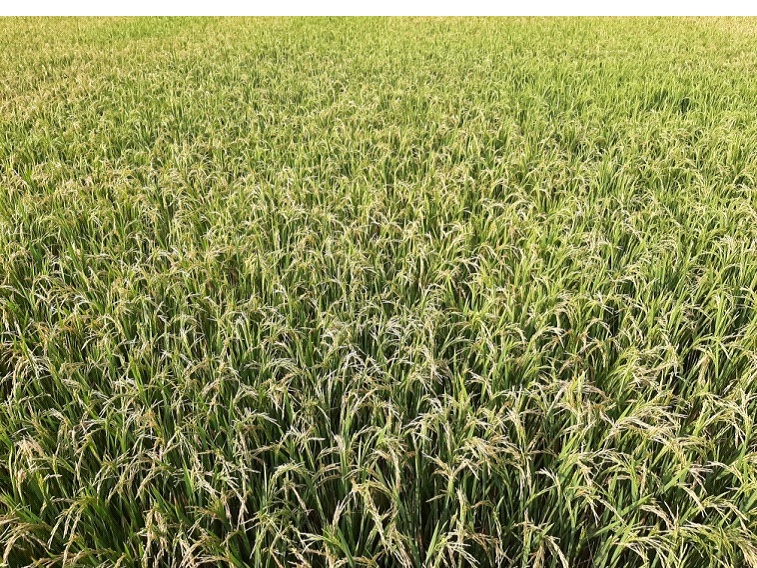 |
DRR Dhan 48 in farmer’s field during rabi 2021 |
|---|---|
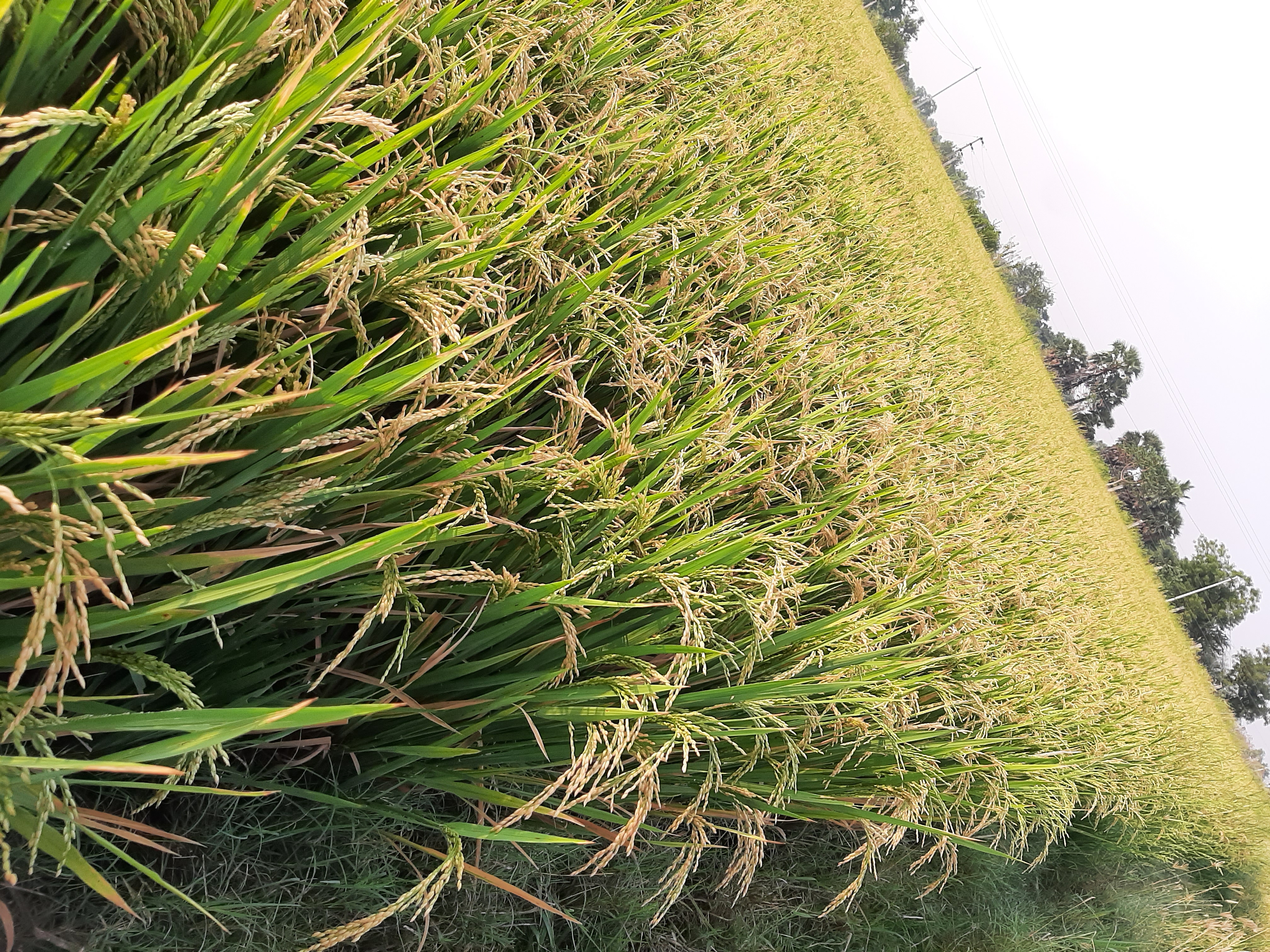 |
|
DRR Dhan 48 is a biofortified high yielding nutritionally rich with zinc along with desirable grain characteristics like medium slender grain type and good cooking quality which is preferred by almost all the southern states like Telangana, Andhra Pradesh, Karnataka and Tamil Nadu.Practical utility/ Scalability:
- Biofortification provides a feasible means of reaching malnourished rural populations who may have limited access to diverse diets, supplements, and commercially fortified foods. The variety is fortified with high zinc, it is estimated that it possesses 27 ppm in brown rice and 22 ppm in polished rice, which will help in curing ‘hidden hunger’ malnourishment in the poor people.
- If this variety is multiplied in large scale and final polished rice is distributed through Public distribution system, it will reach the poor and malnourished people easily.
- Using the tag of high zinc on the package would fetch more price in supermarkets thereby increasing the farmers income.
Package of Practice:
| S. No. | Particulars | Details |
|---|---|---|
|
1. |
Suitability of variety for the area (recommended area for which variety has been released/recommended) | DRR Dhan 48 is a high Zn (22 ppm variety with around 6% and 41% higher yield than BPT 5204 and IR 64, respectively with same duration of BPT 5204 suited under irrigated conditions identified for release in Zone VII for the state of Andhra Pradesh, Telangana, Tamil Nadu, Kerala and Karnataka. |
| 2. | Selection of field/land preparation (Type of topography, soil condition, tillage operation for seed bed etc) | Irrigated low land having pH 5-6. It can be grown with recommended N conditions. Growing nursery is normal as in case of other medium duration rice varieties. |
| 3. | Seed treatment (Recommended chemical with dosages) | Pre-soaking the seed in solution of Bavistin/Emisan-6, 2 g/lit of water over night before incubation. |
| 4. | Sowing and transplanting time (Optimum sowing and transplanting) | Sowing: middle to last week of June, even up to 20th July when rains are delayed. Transplanting: 20-25 days after sowing. |
| 5. | Seed rate/sowing method – line sowing with row to row and plant to plant distance. | Seed of 12-15 kg will be enough for planting in one acre area with spacing 20x15cm row to row and plant to plant. |
| 6. | Fertilizer dose and time of fertilizers application (Type and quantity) | Fertilizer dose: 100-120 kg N/ha, 50-60 kg P/ha and 40-50 kg K/ha depending on the native fertility. The dosages of N should be given in three splits first after 20 days of planting, 2nd at maximum tillering and 3rd at booting. If there are Zn deficiency, Zinc Sulphate Heptahydrate @10kg/acre may be applied at the time of planting. |
| 7. | Weed control (name of the weedicide(s) with dosages and timing of mechanical weeding, if any) | Within week of planting pre-emergence herbicide like butachlor can be applied @600ml/acre with a film of water in field. After 5-30 days of planting one hand weeding may be required. |
| 8. | Disease and pest control (Type of pest and disease with name of chemicals and dosages & time of application) |
Disease management: For neck blast control ⦁ Isoprothiolane⦁ 40% EC ⦁ @⦁ 1.5ml⦁ /lit water, with 200 lit in one acre spray at the time of flowering. To control sheath blight spray Hexaconazole 5 EC, 2ml/lit with 200 lit of water in one acre.
|
| 9. | Irrigation (critical stage of irrigation and method of irrigation). | Normal irrigation is required |
| 10. | Harvesting (Approximate days of harvestable maturity) | Crop maturity is 135-140 days from seed to seed |
| 11. | Quality characteristics of the variety, if any prominent characteristics of variety) | If has high milling recovery (69%) and head rice recovery (61%). It has medium slender grains, with 5.8 mm kernel length and 1.9 mm kernel breadth, 3.0 L/B ratio, it has intermediate AC (23%) and ASV (7.0) hard GC (32 mm) and very translucent grains indicating good cooking quality. |
| 12. | Expected Yield of variety/acre from qtls/acre (yield subject to use under area of adaption and recommended climate conditions and adaption of package and practices. | 5-5.5 t/ha under irrigated conditions. |
